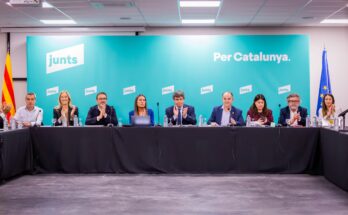I was 16 years old when I left Masatepe in 1959 to enroll at the Faculty of Law in León. On January 1 of that year, the Sierra Maestra guerrillas had triumphantly entered Havana, and in Nicaragua there was only talk of armed struggle. If Batista had fallen, the Somozas could have been thrown out as well. The founder of the dynasty, Anastasio Somoza García, killed by gunfire in 1956, right there in León, had inherited power from his two sons, Luis, who held the presidency, and Anastasio, head of the army.
Classes began on Monday 1 June, but the university authorities decided to postpone the opening of the courses after the landing, coming from Costa Rica, of a group of insurgents led by the journalist Pedro Joaquín Chamorro, in two successive trips of an old cargo plane, destroyed by the Somoza air force after the second landing. The vast majority of the members of the two columns were taken prisoner.
The lessons finally opened, but on June 24, another guerrilla column, supported by Cuba with supplies from Che Guevara, was surprised in the camp set up in El Chaparral, in Honduran territory, before it could cross the border to enter Nicaraguan territory, in a combined maneuver of the armies of the two countries. Carlos Fonseca, who would later be the founder of the Sandinista Front, came as a member of that column.
Carlos Fonseca’s alleged death has sparked daily street protests. Suddenly I found myself on the streets too, in another world different from the one I came from, because my whole family was loyal to the liberal party, the Somoza party.
The freshmen’s holiday parade was to be held on July 23, but the student leadership decreed that it would be a demonstration of mourning. We were asked to attend with black tie attire and women in mourning. At three in the afternoon we gathered in the auditorium. And we went out into the street.
When a platoon of soldiers blocked our path, we started to backtrack. I was on the left side, walking along the sidewalk, when suddenly I heard the explosion of a tear gas canister and immediately saw the red cans running along the sidewalk and exploding, filling the street with smoke. Behind me the first sharp, sharp shots of Garand rifles rang out, then the clicking of a machine gun. I ran into the back door of the El Rodeo restaurant, pushed it open and it gave way, and I went up. He went down a staircase that led to the door of a bedroom where there was an employee on a bed with three little girls who, terrified, clung to her body.
I looked out from the balcony of the bedroom overlooking the street where suddenly the air had been emptied of noise and time had disappeared, the soldiers blocking the street were placed in three positions, standing, on their knees, lying on the ground, with smoking rifles, the one who handled the machine gun tripod was also lying on the pavement on the left side, the same one where I had run, and towards the right side a pile of bodies stretched out and blood spreading on the pavement and now the silence was broken and someone was shouting “an ambulance!, an ambulance!”
I asked the woman if there was a phone, they didn’t have one. I returned to the balcony and saw a priest on his knees blessing a wounded man, at which point I heard the insistent sirens of the Fire Brigade ambulance, but the guards did not move to let him pass.
Finally the platoon began to retreat, managed to overtake the ambulance, I went down to the street and found Erick Ramírez, my classmate from the first row of the class, lying face down on the ground, I knelt next to him to tell him not to worry, that we would take him to the hospital, the hole in his back was small, but when we turned him over to pick him up and carry him, his entire chest was deflowered, and a few steps away the body was on the sidewalk of Mauricio Martínez, my other bench colleague, and there are two more dead, Sergio Saldaña and José Rubí, and many injured, the count will be more than 70.
We took the wounded and dead to San Vicente hospital, loading them as best we could into taxis and private vehicles. It’s the first time I’ve entered a morgue. The corpses were stripped naked and placed on slabs waiting to be washed with a pump.
When Managua radio stations broadcast the names of the dead the next day, my uncle Gustavo Mercado, director of a milk pasteurization company, thought he heard “Sergio Ramírez” on the list, confusion caused by the names of Sergio Saldaña and Erick Ramírez. Without saying anything to my parents, he walked towards León wrapped in a shroud. The military checkpoints did not let him through.
He had survived. A few weeks later he would have turned 17.



